Research
Research
Research Highlights
Research Highlights
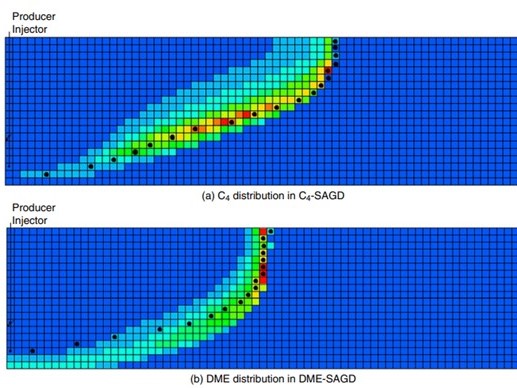
Novel solvent, such as Dimethyl Ether (DME), can be used as a solvent aid for thermal EOR processes, as an alternative to traditional alkane solvents. DME can be converted from green resources. Greener ways of manufacturing DME make use of syngas captured from industrial wastes such as flue gas, and fixate carbons out of the industrial emissions. This makes DME a carbon bearer alternative to CO2 in the CCS processes.
The volatility of DME is between propane and butane, which were believed to be less efficient but more economic choice of solvent. DME, which is an economic solvent, is water-soluble solvent, and this makes DME more advantageous than alkane solvents of similar volatility.
Simulation study and lab investigations has shown the promising performance of DME in reducing the steam-to-oil ratio by 35%, and is able to improve the oil recovery rate by 15%. Solubility of DME in water has multiple benefits. First, water-DME is a Konyenburg-Scott Type IIIm binary, compared to Type III-HA for water-alkane binaries. This difference makes the displacing front for steam-DME coinjection higher than alkane cases of similar volatility; i.e., oil production rate is higher in DME case than in C3 case. Second, dispersion of solvent can be greatly enhanced by water. DME is soluble in water, and therefore, DME can be dispersed through the water phase, and penetrate into a deeper reservoir. This greatly enhanced the thickness of mobilized oil, and increase the oil recovery. Third, DME solubility in water makes the oil and water density very close to each other. Mixing can be better between DME and oil in this scenario compared to other solvent.
Besides the solubility of DME in oil, DME was also found to modify the IFT and contact angles between water and oil. These mechanisms may additionally improve the oil recovery in the thermal processes.
References
Sheng, K., Okuno, R. and Wang, M., 2018. Dimethyl ether as an additive to steam for improved steam-assisted gravity drainage. SPE Journal, 23(04), pp.1201-1222. https://doi.org/10.2118/184983-PA
Baek, K.H., Sheng, K., Argüelles-Vivas, F.J. and Okuno, R., 2019. Comparative study of oil-dilution capability of dimethyl ether and hexane as steam additives for steam-assisted gravity drainage. SPE Reservoir Evaluation & Engineering, 22(03), pp.1030-1048. https://doi.org/10.2118/187182-PA
Sheng, K., Okuno, R. and Wang, M., 2017, February. Water-soluble solvent as an additive to steam for improved SAGD. In SPE Canada Heavy Oil Technical Conference, February 15-16, 2017, Calgary, Alberta, Canada. https://doi.org/10.2118/184983-MS
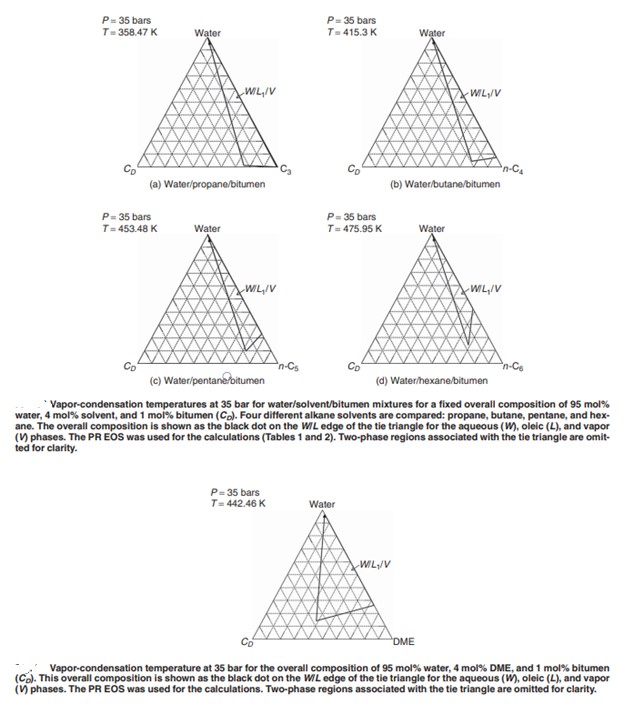
Figure 1 Phase behavior for water-oil-DME systems at possible displacing front conditions.
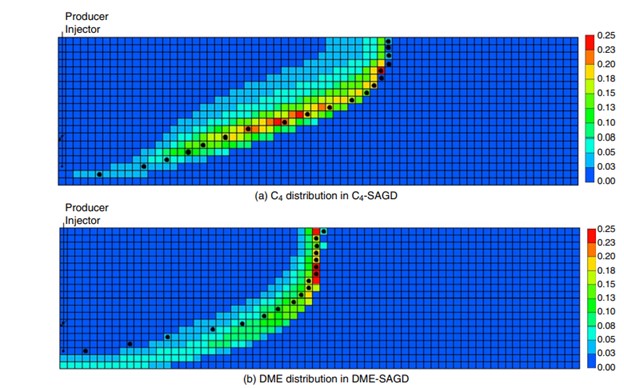
Figure 2 Overall concentration of C4 in C4-SAGD and that of DME in DME-SAGD at 1.8 years. The chamber edge is indicated by black dots. (a) C4 distribution in C4-SAGD; (b) DME distribution in DME-SAGD.
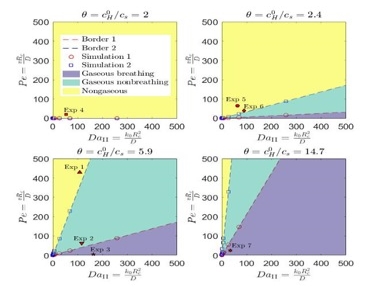
The dissolution and precipitation of carbonates are critically important processes in a wide array of natural and engineering processes such as the global carbon cycle, Karst topography, biomineralization, rock weathering, geological carbon sequestration, petroleum reservoir acidizing. A better understanding of how carbon is mineralized into and released from solid mineral phases would contribute to the decarbonization of our economy and society.

We present this research in two parts.
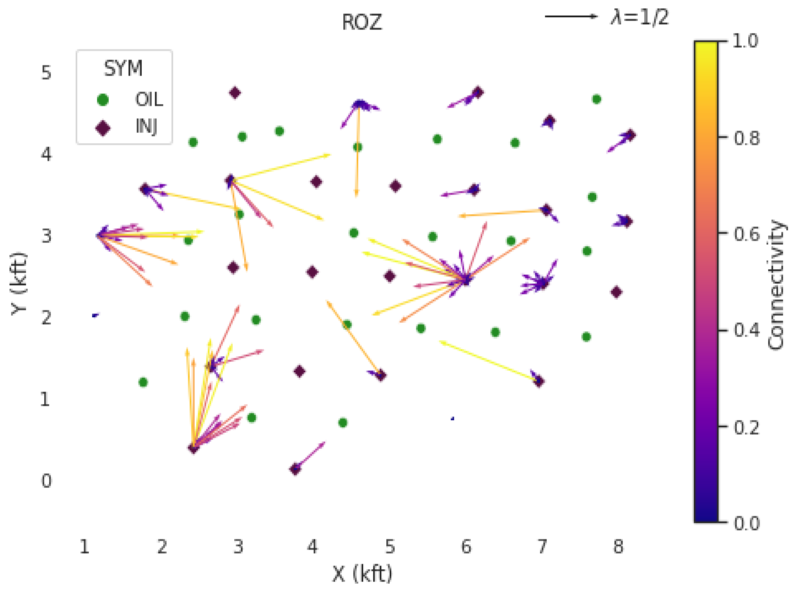
Oilfields only produce a small fraction of the original resource in place during primary recovery. After that, the economic way to produce oil is by injecting water and/or chemicals into the reservoir to push oil toward the producing wells.
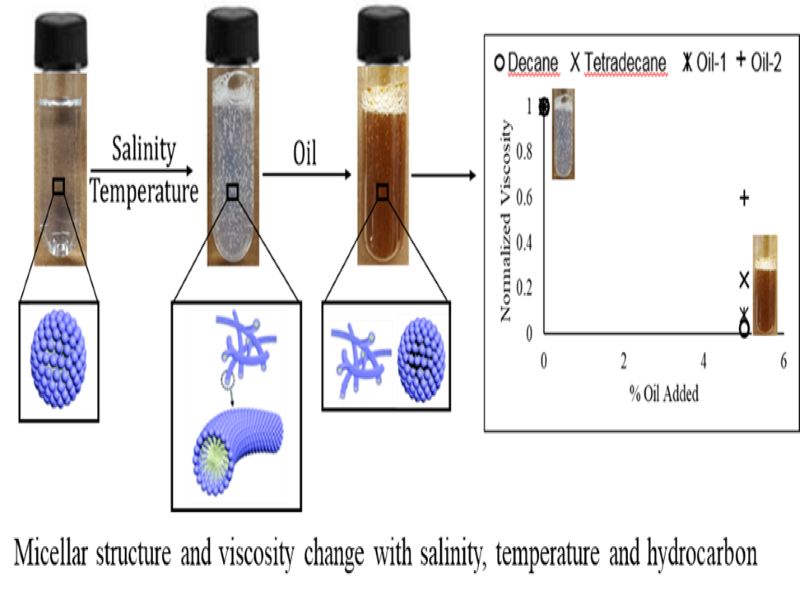
Surfactants have the ability to self-assemble in most of the aqueous solutions to form microstructures, such as, spherical micelles, cylindrical micelles, vesicles, and other structures.
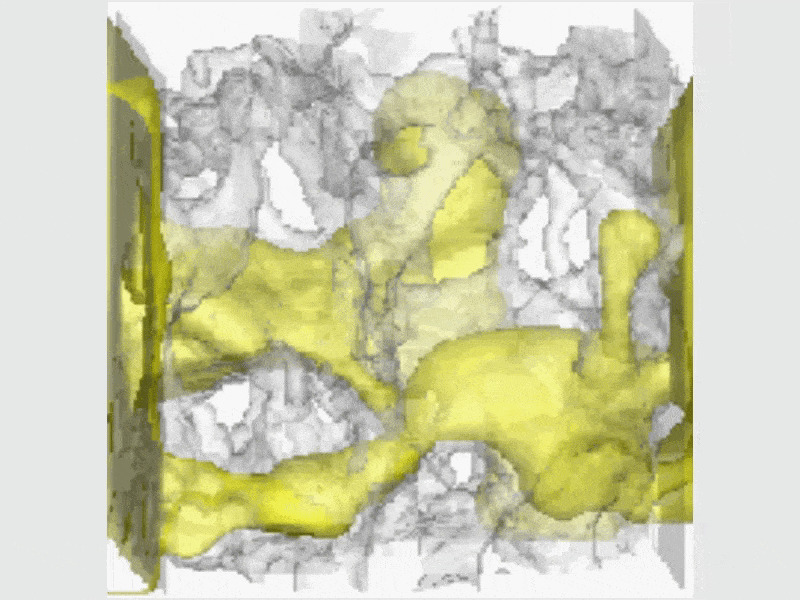
Multiphase flow containing non-Newtonian fluids is important in many fields such as the food industry, biological systems, and the recovery of hydrocarbons. It is challenging since the multiphase flow dynamics and the complex rheological properties of the fluids have to be considered simultaneously. For subsurface engineering problems, the interaction between the fluids and the solid porous matrix is also important. This project helps move forward our understanding on this issue by both pore-scale modeling and micromodel experiment.
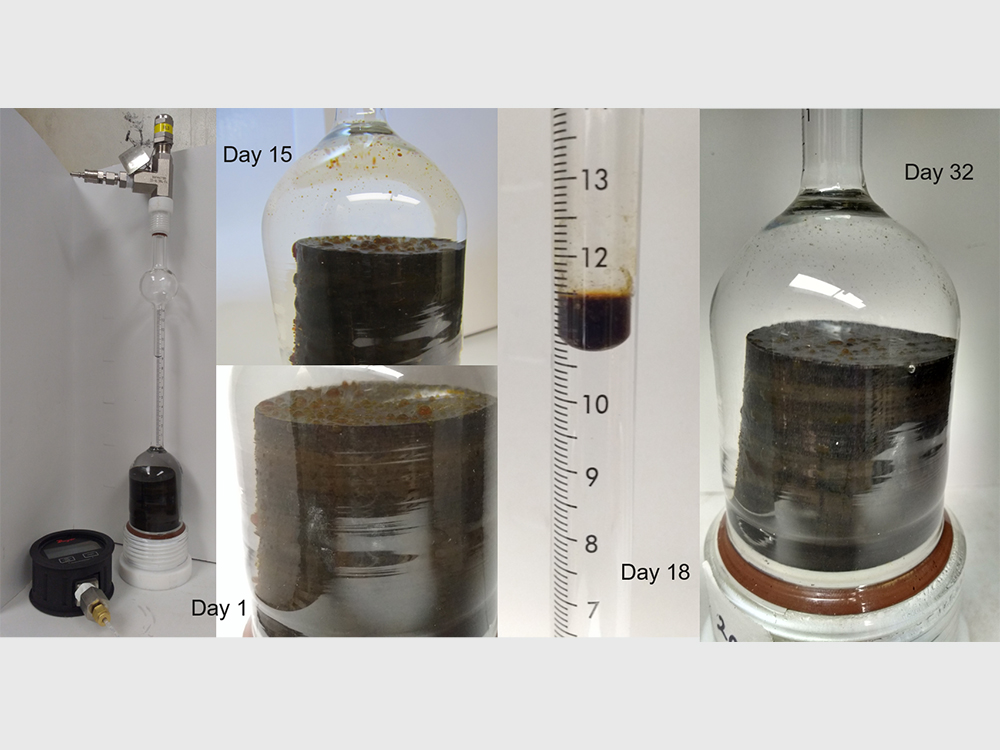
In shale wells oil production declines after the first few years due to ultralow permeability, natural fractures, matrix heterogeneity, and formation damage. To keep the sustainability of the production, we need to develop cutting edge EOR techniques beneficial to the future of the oil and gas industry.
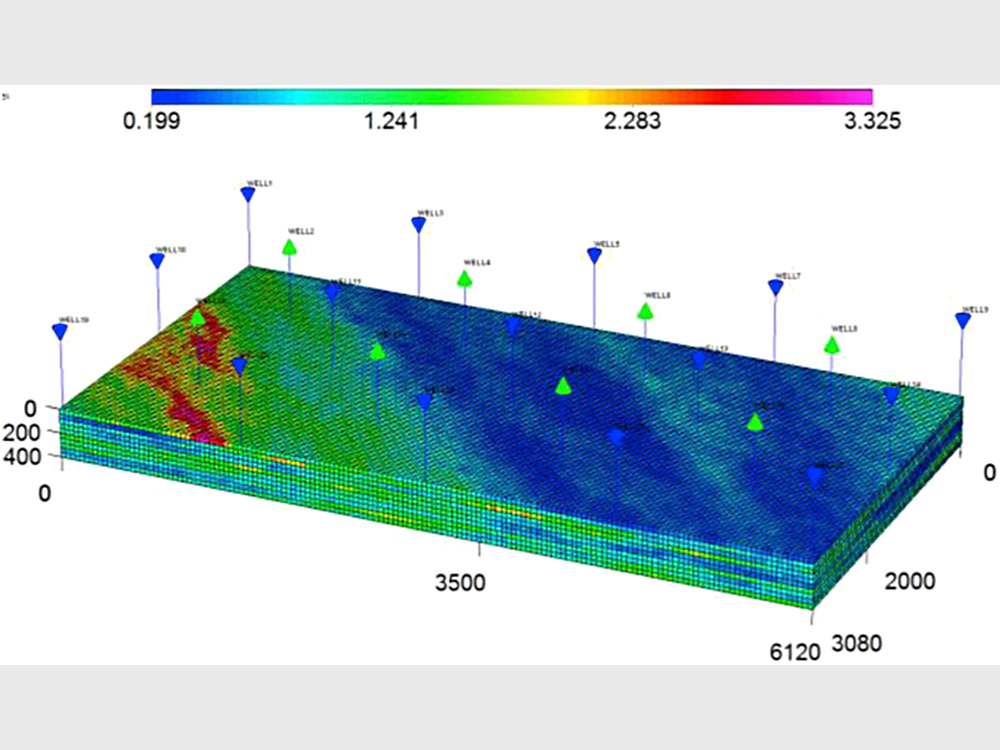
The deliverable of this project is a reservoir simulator that can be used as a reliable tool for the history matching and evaluation of field development opportunities, which will impact the value of chemical flooding projects.


